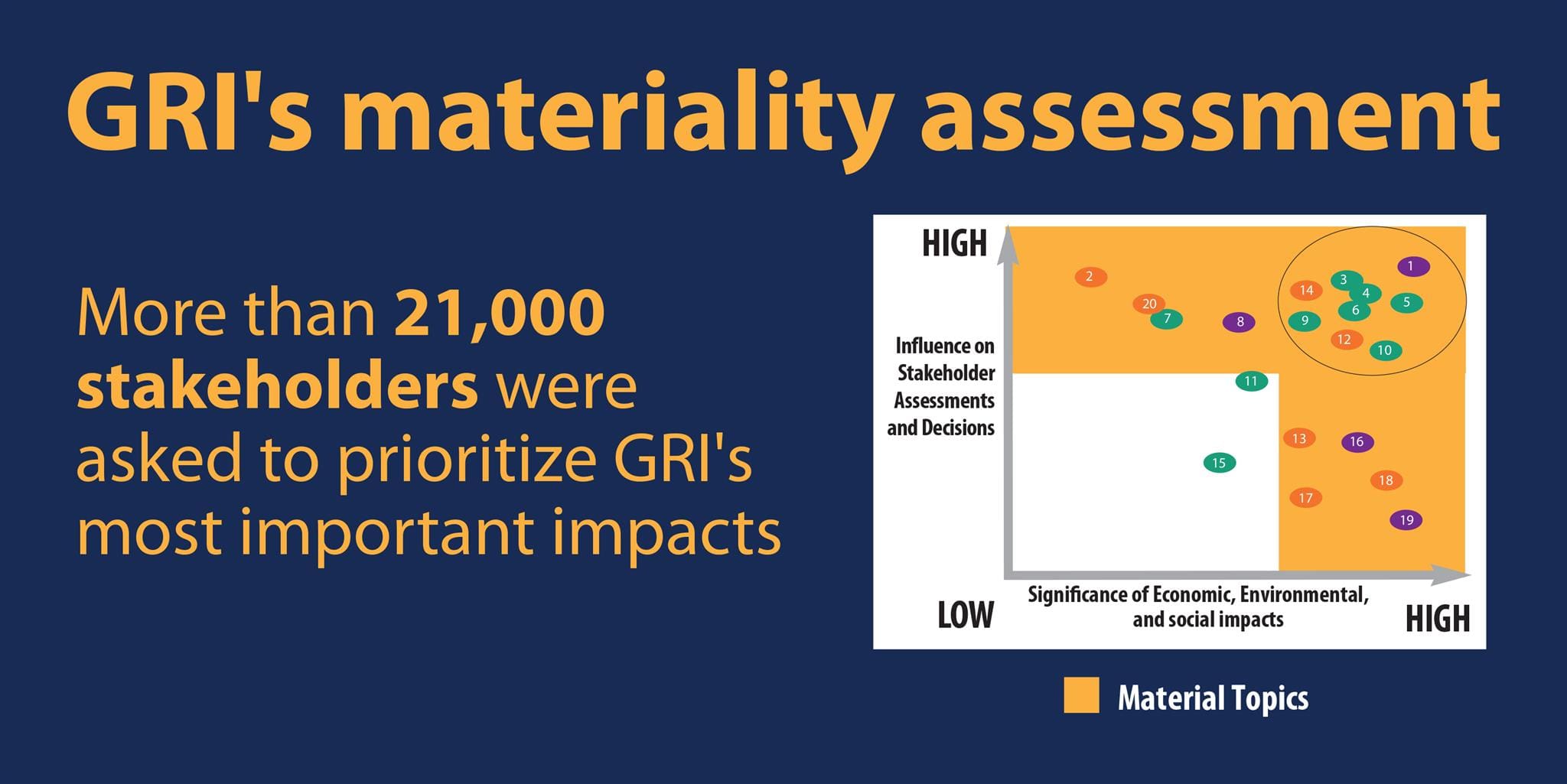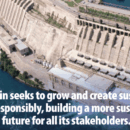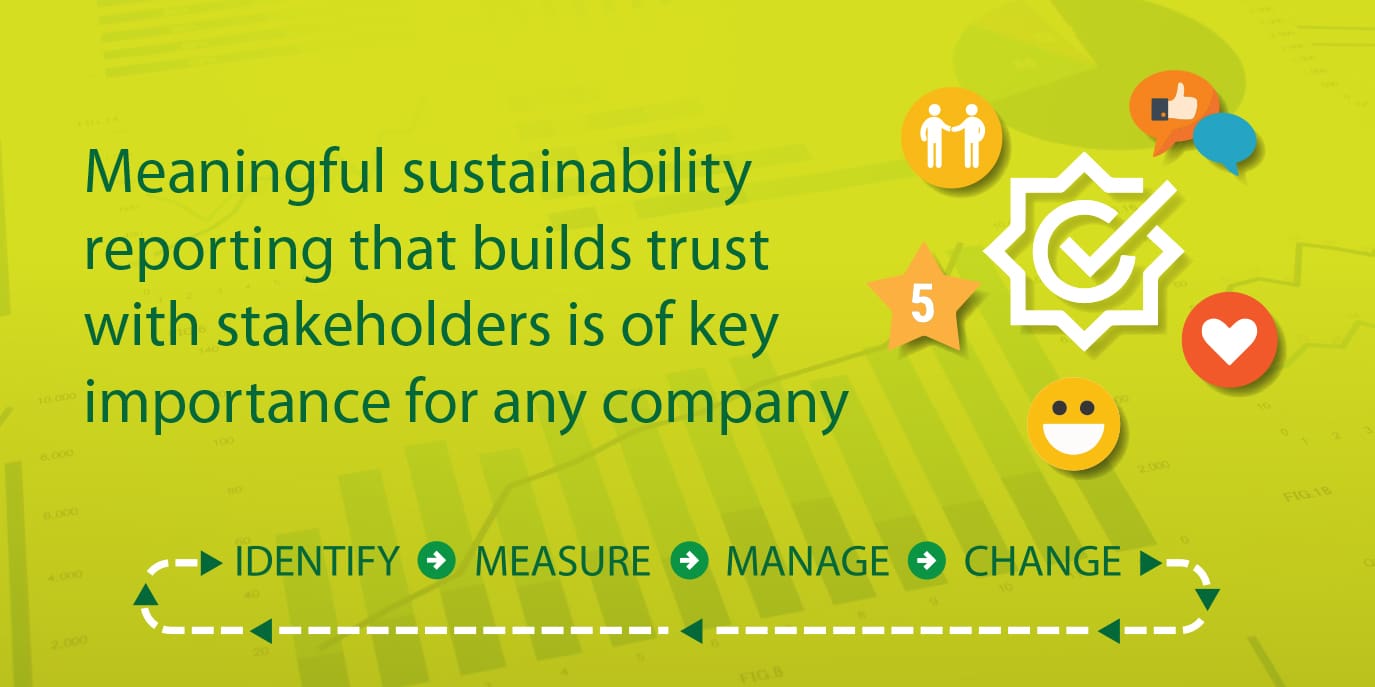Case study: How GRI engages with its stakeholders and acts on their feedback

GRI is a global, independent organization that helps companies, governments and other organizations identify and communicate their impacts, as regards vital sustainability issues.
- 80% of the world’s 250 largest companies issue Corporate Social Responsibility (CSR) reports in accordance with the GRI Standards.
- 111 policies across 50 countries reference GRI.
- The UN Global Compact and GRI have introduced an innovative action platform whereby the GRI Standards will be used by companies wishing to take action and report on the Sustainable Development Goals (SDGs).
This case study is based on the 2014-2015 Combined Report by GRI published on the Global Reporting Initiative Sustainability Disclosure Database that can be found at this link. Through all case studies we aim to demonstrate what CSR/ sustainability reporting done responsibly means. Essentially, it means: a) identifying a company’s most important impacts on the environment, economy and society, and b) measuring, managing and changing.
Abstract
GRI recognizes the importance of a multi-stakeholder engagement in promoting transparency. Tweet This! Thus, as a multi-stakeholder organization, GRI aims at reinforcing an inclusive stakeholder engagement in its actions and projects, considering its stakeholders’ views. In order to engage with its stakeholders and act on their feedback GRI took action to:
- establish an efficient communication channel between the management and employees
- acknowledge and comply with donors’ expectations
- engage Alignment Service clients
- develop the G4 Monitoring Program
- introduce the Corporate Leadership Groups
Subscribe for free and read the rest of this case study
Please subscribe to the SustainCase Newsletter to keep up to date with the latest sustainability news and gain access to over 100 case studies. These case studies demonstrate how companies are dealing responsibly with their most important impacts, building trust with their stakeholders (Identify > Measure > Manage > Change).
With this case study you will see:
- Which are the most important impacts (material issues) GRI has identified;
- How GRI proceeded with stakeholder engagement, and
- What actions were taken by GRI to engage with its stakeholders and act on their feedback
Already Subscribed? Type your email below and click submit
What are the material issues the organization has identified?
In its 2014-2015 Combined Report GRI identified a range of material issues, such as ethical fundraising, coordination, feedback, complaints and action, public awareness and advocacy, employment, training and education, diversity and equal opportunity. Among these, engaging with its stakeholders and acting on their feedback stands out as a key material issue for GRI.
Stakeholder engagement in accordance with the GRI Standards
The Global Reporting Initiative (GRI) defines the Principle of Stakeholder Inclusiveness when identifying material issues (or a company’s most important impacts) as follows:
Stakeholders must be consulted in the process of identifying a company’s most important impacts and their reasonable expectations and interests must be taken into account. This is an important cornerstone for CSR / sustainability reporting done responsibly.
Key stakeholder groups GRI engages with:
| Stakeholder Group | Method of engagement |
| Governance bodies | · Calls · Emails · Meetings · Webinars · GRI Newsletter |
| Staff members | · Calls · Emails · Meetings · iGRI News · Staff Satisfaction Survey |
| Academics | · Calls · Emails |
| Assurance providers | · Calls · Emails · Site visit |
| Bloggers | · Emails |
| Capital market operators, investors and analysts | · Calls · Emails · Meetings · Events |
| Certified Software and Tools Providers | · Calls · Emails |
| Civil society organizations | · Formal consultation (related to SDG Compass) · Emails · Calls · Events |
| Consultants | · Calls · Emails · GRI newsletter |
| Data Partners | · Emails · GRI newsletter · LinkedIn Group · Webinar for new partners |
| Donors | · Calls · Emails · Meetings |
| Governmental Advisory Group members | · Calls · Emails · Meetings |
| GRI Certified Training Partners | · Calls · Emails · Webinars · OS newsletter |
| Labor | · Meetings · Letters |
| Media | · Calls · Emails · Social media · Press releases · GRI newsletter |
| NGOs | · Calls · Emails · Meetings · Events |
| Organizational Stakeholders (OS) | · Calls · Emails · Webinars · OS newsletter |
| Partner organizations | · Calls · Emails · Meetings |
| Policy makers and regulators (government agencies) | · Calls · Emails · Meetings · Events |
| Reporters | · Emails |
| Service clients (including clients of Materiality Disclosures and Application Level Services) | · Emails · Calls |
| Suppliers | · Calls · Emails |
How stakeholder engagement was made to identify material issues
To identify “what matters, where it matters”, GRI conducted a stakeholder engagement survey among more than 21,000 external and 147 internal stakeholders. GRI asked stakeholders to prioritize its material aspects and, possibly, suggest additional topics. In addition, GRI contacted, with regard to its impacts, 33 stakeholders through different channels, including email and/or telephone.
What actions were taken by GRI to engage with its stakeholders and act on their feedback?
In its 2014-2015 Combined Report GRI reports that it took the following actions for engaging with its stakeholders and acting on their feedback:
- Establishing an efficient communication channel between the management and employees
- The Executive Management Team (EMT) built a solid communication channel with GRI’s employees, by asking for their feedback when defining policies. GRI asks for employee feedback through:
- monthly staff meetings
- quarterly updates and Q&A sessions with GRI’s Chief Executive
- ad-hoc topic meetings
- the monthly internal newsletter (iGRI News)
- communication via GRI’s intranet and surveys
- Moreover, the GRI Works Council engages employees in internal activities and guarantees that their opinions are taken into account when determining policies and procedures that significantly impact them.
- Acknowledging and complying with donors’ expectations
- As GRI is a non-profit organization, successful engagement with donors is essential, taking into account that deliverables must correspond to both GRI’s and donors’ objectives. Furthermore, constant communication via email, phone calls and face-to-face meetings is highly important for designing and implementing activities that correspond to donors’ expectations and goals. In addition, the Fundraising Committee and Fundraising Team focus on ensuring appropriate engagement, by applying a specific management tool, developed for this purpose.
- Engaging Alignment Service clients
- GRI maintains that engaging and considering stakeholders’ feedback is vital for developing its services. When a new service is developed or tested, GRI engages with its broad network of stakeholders. In 2015, an ongoing customer satisfaction survey for Alignment Service clients was introduced, to guarantee that GRI is adequately informed on matters related to user experience.
- Additionally, the organizations completing GRI’s Alignment Services are urged to participate in the survey carried out afterwards. The survey includes precise questions related to the service provided and its benefits. Stakeholders may share opinions, feedback or recommendations and are informed on any developments and modifications via the GRI monthly newsletter, webinars, and frequent email communication.
- Developing the G4 Monitoring Program
- GRI developed the G4 Monitoring Program, aiming to:
- gather stakeholder perspectives on G4’s advantages and disadvantages
- find areas that may need clarifications
- record stakeholders’ impressions regarding G4
- Feedback is obtained through an online feedback form.
- Introducing the Corporate Leadership Groups
- In 2015, GRI introduced the Corporate Leadership Groups (Sustainability and Reporting 2025 and integrated reporting), so as to strengthen engagement with reporting organizations. The majority of programmes and projects in the Organizational Stakeholders (OS) programme include responding to OS’s community inquiries.
Which GRI indicators/Standards have been addressed?
The GRI indicator addressed in this case is: G4-26: Report the organization’s approach to stakeholder engagement, including frequency of engagement by type and by stakeholder group, and an indication of whether any of the engagement was undertaken specifically as part of the report preparation process and the updated GRI Standard is: GRI 102-43: Approach to stakeholder engagement
78% of the world’s 250 largest companies report in accordance with the GRI Standards
SustainCase was primarily created to demonstrate, through case studies, the importance of dealing with a company’s most important impacts in a structured way, with use of the GRI Standards. To show how today’s best-run companies are achieving economic, social and environmental success – and how you can too.
Research by well-recognised institutions is clearly proving that responsible companies can look to the future with optimism.
7 GRI sustainability disclosures get you started
Any size business can start taking sustainability action
GRI, IEMA, CPD Certified Sustainability courses (2-5 days): Live Online or Classroom (venue: London School of Economics)
- Exclusive FBRH template to begin reporting from day one
- Identify your most important impacts on the Environment, Economy and People
- Formulate in group exercises your plan for action. Begin taking solid, focused, all-round sustainability action ASAP.
- Benchmarking methodology to set you on a path of continuous improvement
References:
1) This case study is based on published information by the Global Reporting Initiative, located at the link below. For the sake of readability, we did not use brackets or ellipses. However, we made sure that the extra or missing words did not change the report’s meaning. If you would like to quote these written sources from the original please revert to the following link:
https://www.globalreporting.org/resourcelibrary/GRIs%20Combined%20Report%202014-2015.pdf
(November 2015)
2) http://www.fbrh.co.uk/en/global-reporting-initiative-gri-g4-guidelines-download-page
3) https://g4.globalreporting.org/Pages/default.aspx
4) https://www.globalreporting.org/standards/gri-standards-download-center/
Note to the Global Reporting Initiative: With each case study we send out an email requesting a comment on this case study. If you have not received such an email please contact us.









